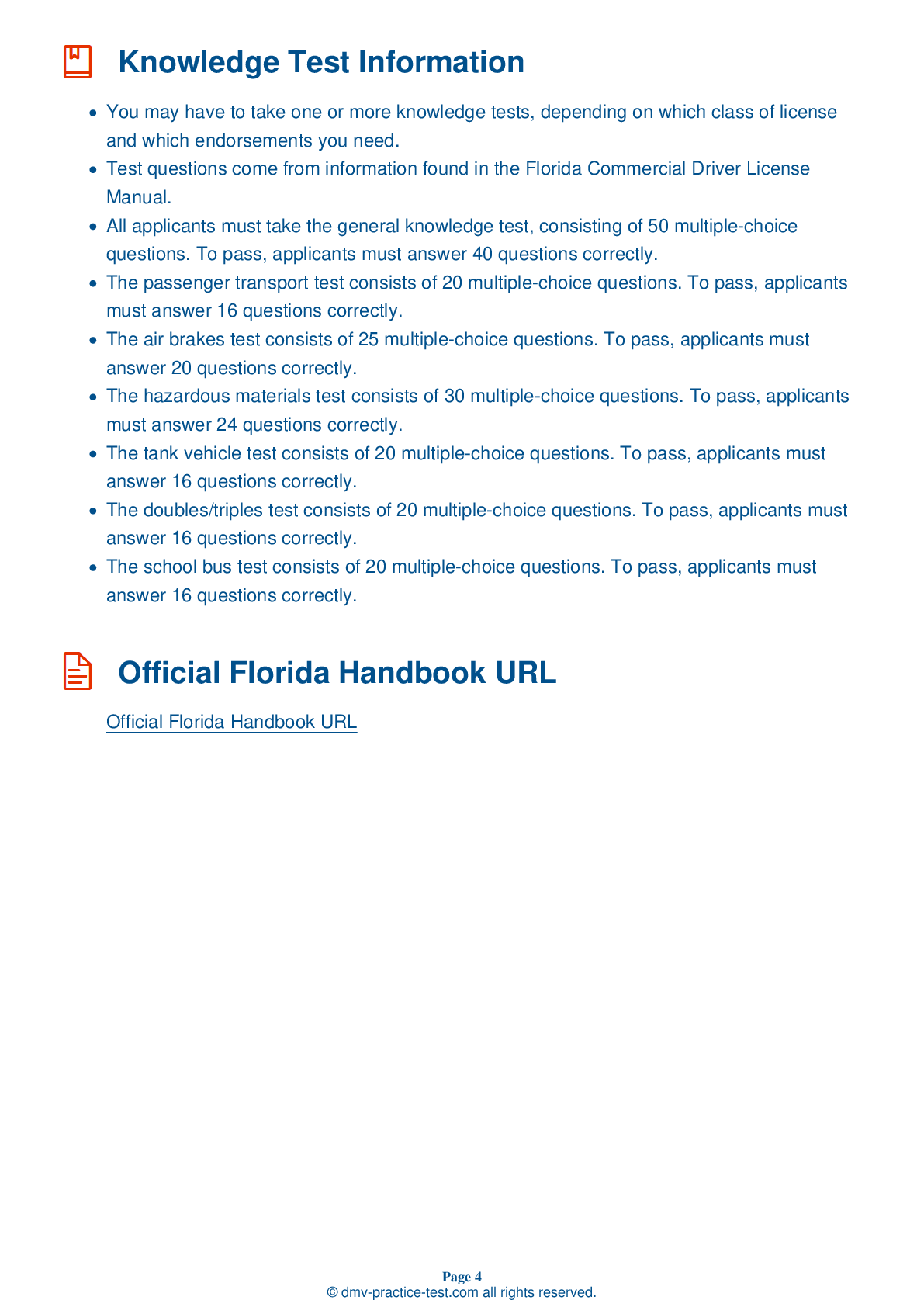Class A Driving Test | Florida 2025 #1 Page 4 of 7
Train for FREE online with our Florida class A license test. The official exam test consists of several obligatory parts, with all of them checking your knowledge of different blocks of road rules. If you need to obtain a FL CDL class A permit in 2025, practice as much as possible. Free sample tests published on our website will help you check and improve your knowledge and boost your grades. Please bear in mind that CDL class A requirements may vary from state to state.
22 . If taking the driving test and the route does not include a railroad crossing, you:
If your on-road driving test route does not include a railroad crossing, you may be asked to explain and demonstrate the proper railroad crossing procedures to the examiner at a simulated location.
23 . If a law enforcement officer is stopped along the side of a multilane roadway, approaching drivers must:
In accordance with Florida's Move Over Law, when approaching a stopped emergency, sanitation, or utility service vehicle, you must vacate the lane closest to the stopped vehicle and pass. If you cannot safely change lanes, or if no other lane is available, you must slow down to a speed that is at least 20 mph below the posted speed limit.
24 . If confronted by an aggressive driver, you should:
If confronted by an aggressive driver, it is most important to get out of their way, if possible. Do not make eye contact with the driver, as doing so could provoke them. Do not let them provoke you with their actions.
25 . If there is a cargo fire in a box trailer:
The doors of a trailer should be not be opened in the event of a cargo fire, especially if the cargo includes hazardous materials. Opening trailer doors would increase the fire's oxygen supply, potentially causing the fire to increase in size.
26 . When encountering a railroad crossing during the driving test, you should:
During the on-road driving test, you must not stop, change gears, pass another vehicle, or change lanes while any part of your vehicle is in a railroad crossing.
27 . When drivers turn, they usually:
When turning, drivers usually look in the direction of their turn. If a driver fails to signal before a turn or lane change, their body movements may still provide a clue that they are planning to turn.
28 . An alcohol evaporator in an air brake system:
Some air brake systems include an evaporator that introduces alcohol into the system. The alcohol can help prevent ice from forming within the system.
See the exact questions that will be on the 2025 Florida DMV exam.
99.2% of people who use the cheat sheet pass the FIRST TIME
Lillian MCcranie explains how our CDL study guide was helpful in passing the exam and recommends it to everyone.
Cameron tells us how he purchased the CDL exam, and found it to be a useful tool which helped him pass the exam and find a job.



